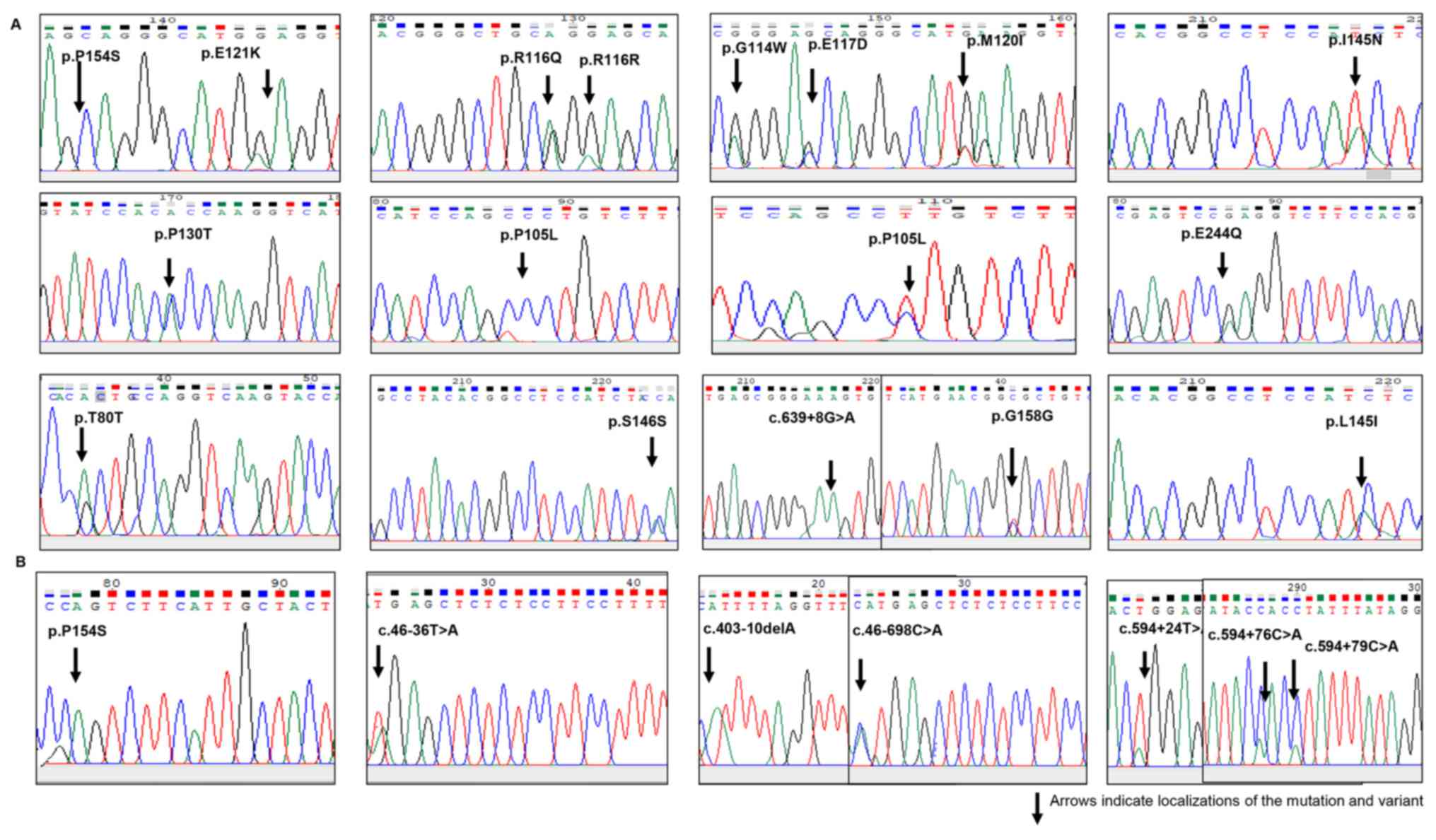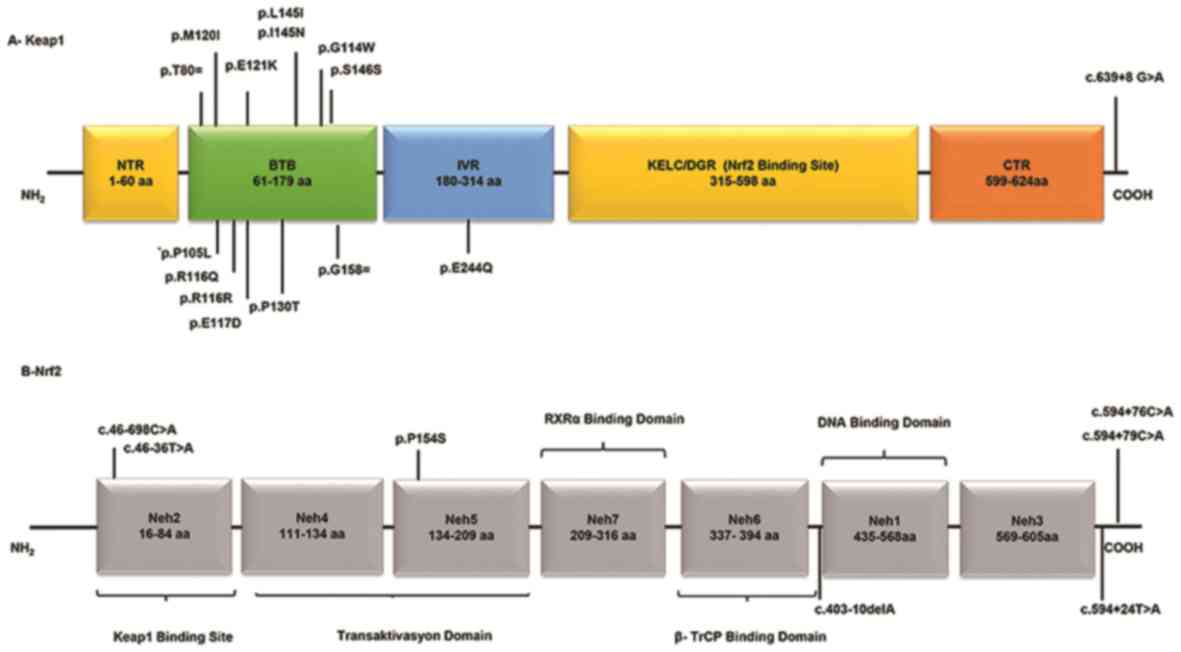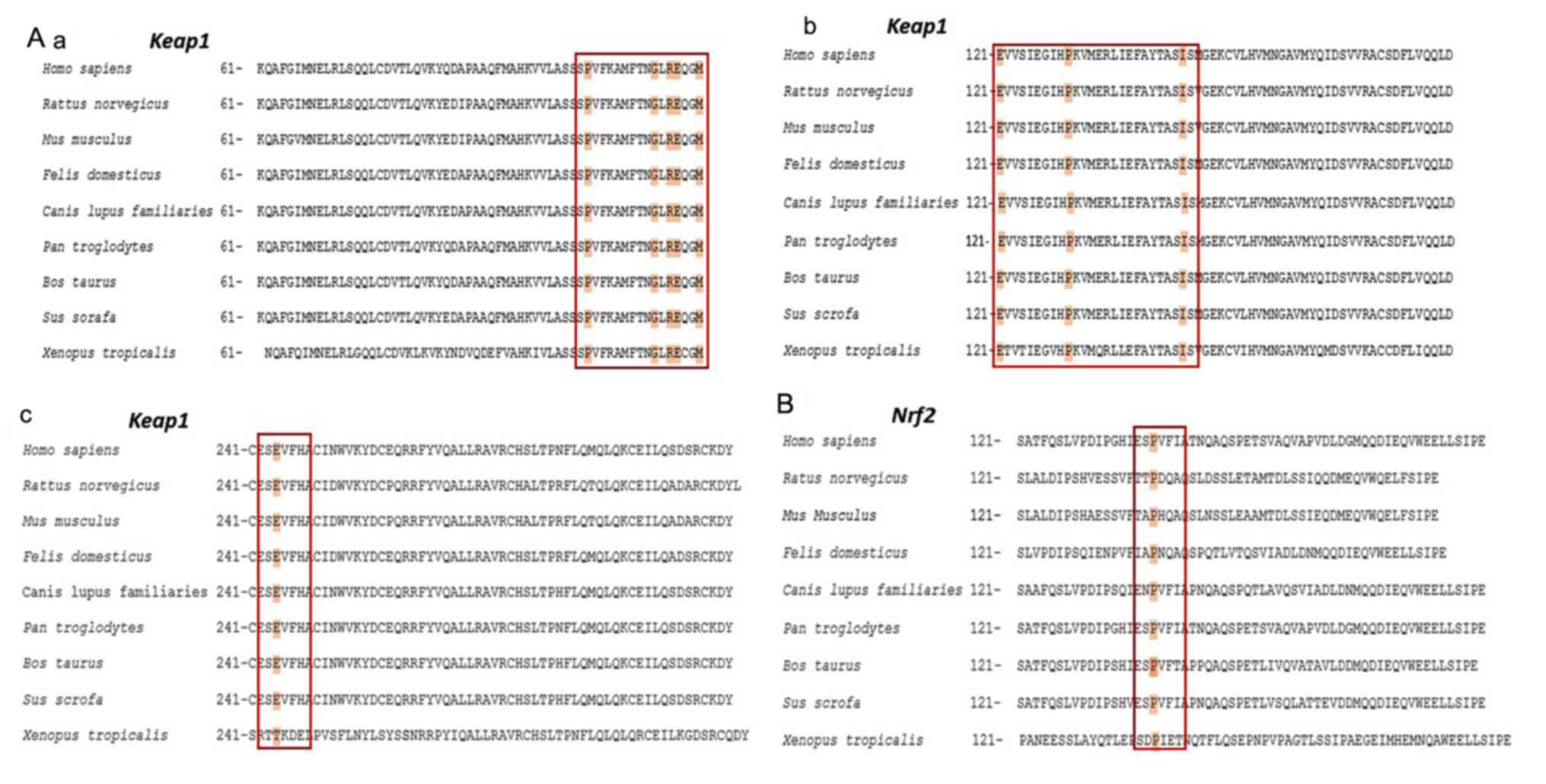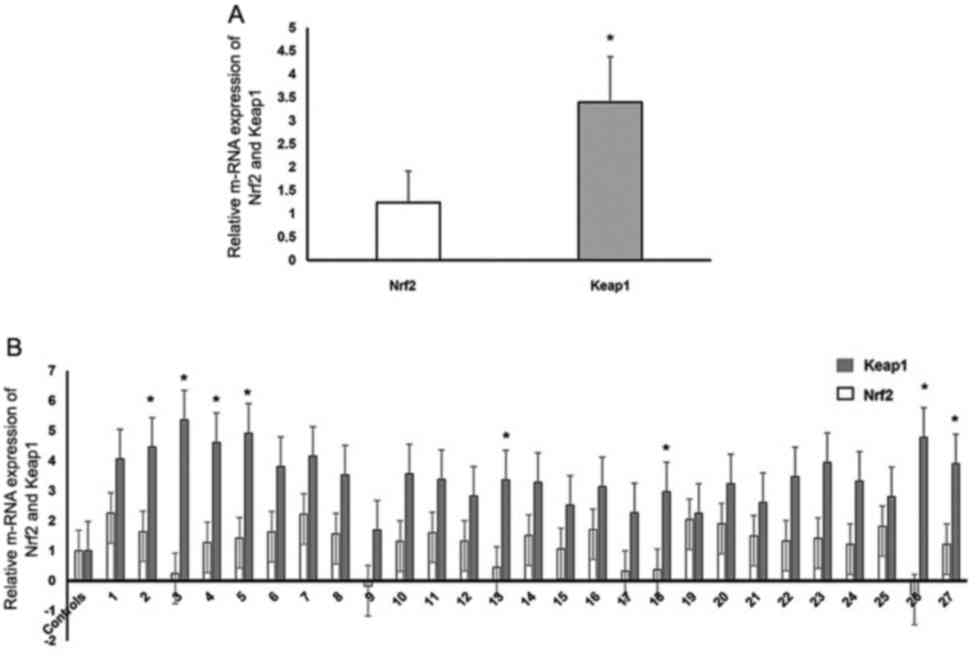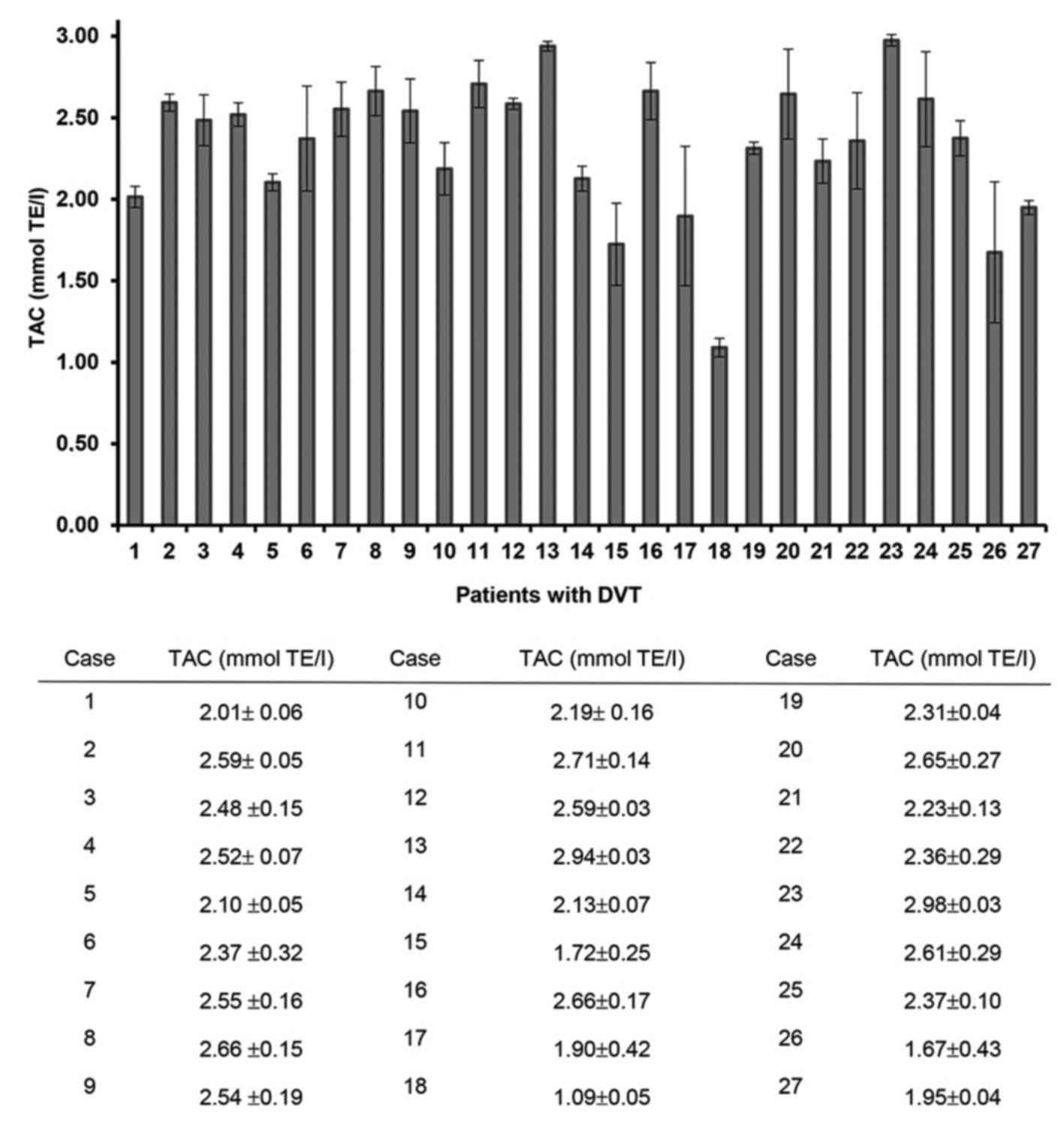|
1
|
Chistiakov DA, Orekhov AN and Bobryshev
YV: Endothelial Barrier and Its Abnormalities in Cardiovascular
Disease. Front Physiol. 6(365)2015.PubMed/NCBI View Article : Google Scholar
|
|
2
|
Förstermann U: Oxidative stress in
vascular disease: Causes, defense mechanisms and potential
therapies. Nat Clin Pract Cardiovasc Med. 5:338–349.
2008.PubMed/NCBI View Article : Google Scholar
|
|
3
|
Loscalzo J: Oxidative stress in
endothelial cell dysfunction and thrombosis. Pathophysiol Haemost
Thromb. 32:359–360. 2002.PubMed/NCBI View Article : Google Scholar
|
|
4
|
Chen B, Lu Y, Chen Y and Cheng J: The role
of Nrf2 in oxidative stress-induced endothelial injuries. J
Endocrinol. 225:R83–R99. 2015.PubMed/NCBI View Article : Google Scholar
|
|
5
|
Konukoglu D and Uzun H: Endothelial
dysfunction and hypertension. Adv Exp Med Biol. 956:511–540.
2017.PubMed/NCBI View Article : Google Scholar
|
|
6
|
Bengisun U: Basic treatment principles of
deep vein thrombosis and pulmonary embolism. TOTBID Derg.
18:505–513. 2019.
|
|
7
|
Kruger PC, Eikelboom JW, Douketis JD and
Hankey GJ: Deep vein thrombosis: Update on diagnosis and
management. Med J Aust. 210:516–524. 2019.PubMed/NCBI View Article : Google Scholar
|
|
8
|
Harrison D, Griendling KK, Landmesser U,
Hornig B and Drexler H: Role of oxidative stress in
atherosclerosis. Am J Cardiol. 91 (3A):7A–11A. 2003.PubMed/NCBI View Article : Google Scholar
|
|
9
|
Harrison DG, Gongora MC, Guzik TJ and
Widder J: Oxidative stress and hypertension. J Am Soc Hypertens.
1:30–44. 2007.PubMed/NCBI View Article : Google Scholar
|
|
10
|
Howden R: Nrf2 and cardiovascular defense.
Oxid Med Cell Longev. 2013(104308)2013.PubMed/NCBI View Article : Google Scholar
|
|
11
|
Park JG and Oh GT: The role of peroxidases
in the pathogenesis of atherosclerosis. BMB Rep. 44:497–505.
2011.PubMed/NCBI View Article : Google Scholar
|
|
12
|
da Costa RM, Rodrigues D, Pereira CA,
Silva JF, Alves JV, Lobato NS and Tostes RC: Nrf2 as a Potential
Mediator of Cardiovascular Risk in Metabolic Diseases. Front
Pharmacol. 10(382)2019.PubMed/NCBI View Article : Google Scholar
|
|
13
|
Galley JC and Straub AC: Redox control of
vascular function. Arterioscler Thromb Vasc Biol. 37:e178–e184.
2017.PubMed/NCBI View Article : Google Scholar
|
|
14
|
Lee JM, Li J, Johnson DA, Stein TD, Kraft
AD, Calkins MJ, Jakel RJ and Johnson JA: Nrf2, a multi-organ
protector? FASEB J. 19:1061–1066. 2005.PubMed/NCBI View Article : Google Scholar
|
|
15
|
Smith RE, Tran K, Smith CC, McDonald M,
Shejwalkar P and Hara K: The Role of the Nrf2/ARE antioxidant
system in preventing cardiovascular diseases. Diseases.
4(34)2016.PubMed/NCBI View Article : Google Scholar
|
|
16
|
Kim J, Cha YN and Surh YJ: A protective
role of nuclear factor-erythroid 2-related factor-2 (Nrf2) in
inflammatory disorders. Mutat Res. 690:12–23. 2010.PubMed/NCBI View Article : Google Scholar
|
|
17
|
Kaspar JW, Niture SK and Jaiswal AK:
Nrf2:INrf2 (Keap1) signaling in oxidative stress. Free Radic Biol
Med. 47:1304–1309. 2009.PubMed/NCBI View Article : Google Scholar
|
|
18
|
Kansanen E, Kuosmanen SM, Leinonen H and
Levonen AL: The Keap1-Nrf2 pathway: Mechanisms of activation and
dysregulation in cancer. Redox Biol. 1:45–49. 2013.PubMed/NCBI View Article : Google Scholar
|
|
19
|
Baird L and Dinkova-Kostova AT: The
cytoprotective role of the Keap1-Nrf2 pathway. Arch Toxicol.
85:241–272. 2011.PubMed/NCBI View Article : Google Scholar
|
|
20
|
Hua CC, Chang LC, Tseng JC, Chu CM, Liu YC
and Shieh WB: Functional haplotypes in the promoter region of
transcription factor Nrf2 in chronic obstructive pulmonary disease.
Dis Markers. 28:185–193. 2010.PubMed/NCBI View Article : Google Scholar
|
|
21
|
Kensler TW, Wakabayashi N and Biswal S:
Cell survival responses to environmental stresses via the
Keap1-Nrf2-ARE pathway. Annu Rev Pharmacol Toxicol. 47:89–116.
2007.PubMed/NCBI View Article : Google Scholar
|
|
22
|
Robledinos-Antón N, Fernández-Ginés R,
Manda G and Cuadrado A: Activators and Inhibitors of NRF2: A Review
of Their Potential for Clinical Development. Oxid Med Cell Longev.
2019(9372182)2019.PubMed/NCBI View Article : Google Scholar
|
|
23
|
Tebay LE, Robertson H, Durant ST, Vitale
SR, Penning TM, Dinkova-Kostova AT and Hayes JD: Mechanisms of
activation of the transcription factor Nrf2 by redox stressors,
nutrient cues, and energy status and the pathways through which it
attenuates degenerative disease. Free Radic Biol Med. 88 (Pt
B):108–146. 2015.PubMed/NCBI View Article : Google Scholar
|
|
24
|
Tu W, Wang H, Li S, Liu Q and Sha H: The
anti-inflammatory and anti-oxidant mechanisms of the Keap1/Nrf2/ARE
signaling pathway in chronic diseases. Aging Dis. 10:637–651.
2019.PubMed/NCBI View Article : Google Scholar
|
|
25
|
Satta S, Mahmoud AM, Wilkinson FL, Yvonne
Alexander M and White SJ: The role of Nrf2 in cardiovascular
function and disease. Oxid Med Cell Longev.
2017(9237263)2017.PubMed/NCBI View Article : Google Scholar
|
|
26
|
Sarutipaiboon I, Settasatian N, Komanasin
N, Kukongwiriyapan U, Sawanyawisuth K, Intharaphet P, Senthong V
and Settasatian C: Association of Genetic Variations in NRF2, NQO1,
HMOX1, and MT with severity of coronary artery disease and related
risk factors. Cardiovasc Toxicol. 20:176–189. 2020.PubMed/NCBI View Article : Google Scholar
|
|
27
|
Korytina GF, Akhmadishina LZ, Aznabaeva
YG, Kochetova OV, Zagidullin NS, Kzhyshkowska JG, Zagidullin SZ and
Viktorova TV: Associations of the NRF2/KEAP1 pathway and
antioxidant defense gene polymorphisms with chronic obstructive
pulmonary disease. Gene. 692:102–112. 2019.PubMed/NCBI View Article : Google Scholar
|
|
28
|
Barančík M, Grešová L, Barteková M and
Dovinová I: Nrf2 as a key player of redox regulation in
cardiovascular diseases. Physiol Res. 65 (Suppl 1):S1–S10.
2016.PubMed/NCBI View Article : Google Scholar
|
|
29
|
Cunningham F, Achuthan P, Akanni W, Allen
J, Amode MR, Armean IM, Bennett R, Bhai J, Billis K, Boddu S, et
al: Ensembl 2019. Nucleic Acids Res. 47 (D1):D745–D751.
2019.PubMed/NCBI View Article : Google Scholar
|
|
30
|
Adzhubei I, Jordan DM and Sunyaev SR:
Predicting functional effect of human missense mutations using
PolyPhen-2. Curr Protoc Hum Genet. 7:7–20. 2013.PubMed/NCBI View Article : Google Scholar
|
|
31
|
Tate JG, Bamford S, Jubb HC, Sondka Z,
Beare DM, Bindal N, Boutselakis H, Cole CG, Creatore C, Dawson E,
et al: COSMIC: The catalogue of somatic mutations in cancer.
Nucleic Acids Res. 47 (D1):D941–D947. 2019.PubMed/NCBI View Article : Google Scholar
|
|
32
|
Stenson PD, Mort M, Ball EV, Evans K,
Hayden M, Heywood S, Hussain M, Phillips AD and Cooper DN: The
Human Gene Mutation Database: Towards a comprehensive repository of
inherited mutation data for medical research, genetic diagnosis and
next-generation sequencing studies. Hum Genet. 136:665–677.
2017.PubMed/NCBI View Article : Google Scholar
|
|
33
|
Untergasser A, Cutcutache I, Koressaar T,
Ye J, Faircloth BC, Remm M and Rozen SG: Primer3--new capabilities
and interfaces. Nucleic Acids Res. 40(e115)2012.PubMed/NCBI View Article : Google Scholar
|
|
34
|
Pfaffl MW: A new mathematical model for
relative quantification in real-time RT-PCR. Nucleic Acids Res.
29(e45)2001.PubMed/NCBI View Article : Google Scholar
|
|
35
|
Livak KJ and Schmittgen TD: Analysis of
relative gene expression data using real-time quantitative PCR and
the 2(-Delta Delta C(T)) Method. Methods. 25:402–408.
2001.PubMed/NCBI View Article : Google Scholar
|
|
36
|
World Health Organization (WHO):
Cardiovascular diseases (CVDs). WHO, Geneva, 2017. https://www.who.int/en/news-room/fact-sheets/detail/cardiovascular-diseases-(cvds).
Accessed May 17, 2017.
|
|
37
|
Raskob GE, Angchaisuksiri P, Blanco AN,
Buller H, Gallus A, Hunt BJ, Hylek EM, Kakkar A, Konstantinides SV,
McCumber M, et al: ISTH Steering Committee for World Thrombosis
Day: Thrombosis: A major contributor to global disease burden.
Thromb Res. 134:931–938. 2014.PubMed/NCBI View Article : Google Scholar
|
|
38
|
Heitzer T, Schlinzig T, Krohn K, Meinertz
T and Münzel T: Endothelial dysfunction, oxidative stress, and risk
of cardiovascular events in patients with coronary artery disease.
Circulation. 104:2673–2678. 2001.PubMed/NCBI View Article : Google Scholar
|
|
39
|
Suzuki T and Yamamoto M: Molecular basis
of the Keap1-Nrf2 system. Free Radic Biol Med. 88 (Pt B):93–100.
2015.PubMed/NCBI View Article : Google Scholar
|
|
40
|
Barrera-Rodríguez R: Importance of the
Keap1-Nrf2 pathway in NSCLC: Is it a possible biomarker? Biomed
Rep. 9:375–382. 2018.PubMed/NCBI View Article : Google Scholar
|
|
41
|
Li C, Cheng L, Wu H, He P, Zhang Y, Yang
Y, Chen J and Chen M: Activation of the KEAP1-NRF2-ARE signaling
pathway reduces oxidative stress in Hep2 cells. Mol Med Rep.
18:2541–2550. 2018.PubMed/NCBI View Article : Google Scholar
|
|
42
|
Surh YJ, Kundu JK and Na HK: Nrf2 as a
master redox switch in turning on the cellular signaling involved
in the induction of cytoprotective genes by some chemopreventive
phytochemicals. Planta Med. 74:1526–1539. 2008.PubMed/NCBI View Article : Google Scholar
|
|
43
|
Vanhoutte PM, Shimokawa H, Feletou M and
Tang EH: Endothelial dysfunction and vascular disease - a 30th
anniversary update. Acta Physiol (Oxf). 219:22–96. 2017.PubMed/NCBI View Article : Google Scholar
|
|
44
|
Rangasamy T, Guo J, Mitzner WA, Roman J,
Singh A, Fryer AD, Yamamoto M, Kensler TW, Tuder RM, Georas SN, et
al: Disruption of Nrf2 enhances susceptibility to severe airway
inflammation and asthma in mice. J Exp Med. 202:47–59.
2005.PubMed/NCBI View Article : Google Scholar
|
|
45
|
Kobayashi E, Suzuki T and Yamamoto M:
Roles nrf2 plays in myeloid cells and related disorders. Oxid Med
Cell Longev. 2013(529219)2013.PubMed/NCBI View Article : Google Scholar
|
|
46
|
Pandey P, Singh AK, Singh M, Tewari M,
Shukla HS and Gambhir IS: The see-saw of Keap1-Nrf2 pathway in
cancer. Crit Rev Oncol Hematol. 116:89–98. 2017.PubMed/NCBI View Article : Google Scholar
|
|
47
|
Konstantinopoulos PA, Spentzos D,
Fountzilas E, Francoeur N, Sanisetty S, Grammatikos AP, Hecht JL
and Cannistra SA: Keap1 mutations and Nrf2 pathway activation in
epithelial ovarian cancer. Cancer Res. 71:5081–5089.
2011.PubMed/NCBI View Article : Google Scholar
|
|
48
|
Qin JJ, Cheng XD, Zhang J and Zhang WD:
Dual roles and therapeutic potential of Keap1-Nrf2 pathway in
pancreatic cancer: A systematic review. Cell Commun Signal.
17(121)2019.PubMed/NCBI View Article : Google Scholar
|
|
49
|
Silva-Palacios A, Königsberg M and Zazueta
C: Nrf2 signaling and redox homeostasis in the aging heart: A
potential target to prevent cardiovascular diseases? Ageing Res
Rev. 26:81–95. 2016.PubMed/NCBI View Article : Google Scholar
|
|
50
|
Nioi P, Nguyen T, Sherratt PJ and Pickett
CB: The carboxy-terminal Neh3 domain of Nrf2 is required for
transcriptional activation. Mol Cell Biol. 25:10895–10906.
2005.PubMed/NCBI View Article : Google Scholar
|
|
51
|
Ramos-Gomez M, Kwak MK, Dolan PM, Itoh K,
Yamamoto M, Talalay P and Kensler TW: Sensitivity to carcinogenesis
is increased and chemoprotective efficacy of enzyme inducers is
lost in nrf2 transcription factor-deficient mice. Proc Natl Acad
Sci USA. 98:3410–3415. 2001.PubMed/NCBI View Article : Google Scholar
|
|
52
|
Aoki Y, Sato H, Nishimura N, Takahashi S,
Itoh K and Yamamoto M: Accelerated DNA adduct formation in the lung
of the Nrf2 knockout mouse exposed to diesel exhaust. Toxicol Appl
Pharmacol. 173:154–160. 2001.PubMed/NCBI View Article : Google Scholar
|
|
53
|
Enomoto A, Itoh K, Nagayoshi E, Haruta J,
Kimura T, O'Connor T, Harada T and Yamamoto M: High sensitivity of
Nrf2 knockout mice to acetaminophen hepatotoxicity associated with
decreased expression of ARE-regulated drug metabolizing enzymes and
antioxidant genes. Toxicol Sci. 59:169–177. 2001.PubMed/NCBI View Article : Google Scholar
|
|
54
|
Kim M, Kim S, Lim JH, Lee C, Choi HC and
Woo CH: Laminar flow activation of ERK5 protein in vascular
endothelium leads to atheroprotective effect via NF-E2-related
factor 2 (Nrf2) activation. J Biol Chem. 287:40722–40731.
2012.PubMed/NCBI View Article : Google Scholar
|
|
55
|
Sihvola V and Levonen AL: Keap1 as the
redox sensor of the antioxidant response. Arch Biochem Biophys.
617:94–100. 2017.PubMed/NCBI View Article : Google Scholar
|
|
56
|
Dinkova-Kostova AT, Holtzclaw WD, Cole RN,
Itoh K, Wakabayashi N, Katoh Y, Yamamoto M and Talalay P: Direct
evidence that sulfhydryl groups of Keap1 are the sensors regulating
induction of phase 2 enzymes that protect against carcinogens and
oxidants. Proc Natl Acad Sci USA. 99:11908–11913. 2002.PubMed/NCBI View Article : Google Scholar
|
|
57
|
Schmidt H, Hangmann J, Shams I, Avivi A
and Hankeln T: Molecular evolution of antioxidant and hypoxia
response in long-lived, cancer-resistant blind mole rats: The
Nrf2-Keap1 pathway. Gene. 577:293–298. 2016.PubMed/NCBI View Article : Google Scholar
|
|
58
|
Taguchi K, Motohashi H and Yamamoto M:
Molecular mechanisms of the Keap1–Nrf2 pathway in stress response
and cancer evolution. Genes Cells. 16:123–140. 2011.PubMed/NCBI View Article : Google Scholar
|















